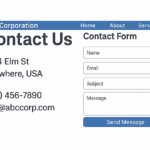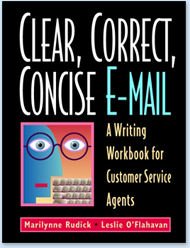Predicting the death of email may seem risky for a consultant who helps frontline customer service agents improve their writing skills, but I’m here and I’m doing it. Throughout the 2000s and the 2010s, email was the workhorse customer service channel—an easy, modern alternative to the 800 number, the IVR, and the post office. But the arrival of social media, text, and live chat—plus the damage companies have been doing when they send truly lousy customer service email—will mean the welcome end of customer service email. The only question is whether email will get a glowing eulogy or a good riddance goodbye.
The 2000s, the 2010s, and the Promise of Customer Service Email
When the email customer service channel took hold in the early 2000s, it offered customer care organizations flexibility, immediacy, and personalization—so much promise! No stamps, no envelopes, no more rolls of fax paper. With email, agents could handle contacts at off hours or when the phones were slow. Email made linking to self-service options easy, so much easier than on the phone where agents had to say, “Go to h-t-t-p colon forward slash forward slash…” And email made it easy for customers to share the other types of online content sometimes needed to receive help: a screenshot, a photo of a damaged product, an online order confirmation.
Throughout these years, email flourished as a personal and a business communication channel, and it could’ve flourished as a service channel. But customer service email fell short of its promise.
- Wrong skillset. Managers staffed email with former phone agents who often had great service skills but poor writing skills. Without adequate writing training, these new email agents were forced to rely heavily on email templates, which resulted in robotic, off-topic responses.
- Cheapskate mindset. To wring more responses out of each person, managers asked phone agents to “fill in” their minutes of downtime between calls by writing emails to customers, but these agents’ fragmented attention resulted in poor quality responses.
- Annoying software setup. Contact centers configured their email software in customer-aggravating ways, such as using only the ticket or reference number as the subject line or using plain text instead of html. Customer service emails commonly included scoldy instructions like “Please type your reply above this line.” Worst of all, contact centers started using “Do Not Reply” email addresses, which instantly increased customer effort and killed customer service conversation.
Why Customers Hate Email Today
Don’t get me wrong. Some customers still like email a lot, and many contact centers handle a large portion of customer contacts in this channel. But many customers are saying a firm “No thanks!” to email.
Customers have other options. It’s not just, “I don’t want to sit on hold waiting for a telephone agent, so I’ll send an email.” When they need service, customers can choose a live, synchronous channel like chat or a social, connected one like Twitter. They can text their doctor’s office, their bank, and the local power company. Add video chat, online forums, AI-enabled options, and more; there’s really no reason for customers to put up with the frustrations caused by email.
Demographic and cultural changes have also made email less appealing. For younger customers, email plays a small role or no role at all in their personal communication, so they’re unlikely to choose it when they need customer service. With the growth of team messaging options such as Slack, email’s role is shrinking in business communication, too. While it may feel like our email inboxes are always full, we’re not choosing email first anymore. Many people avoid email at every opportunity.
Mainly, customers hate email today because companies do it badly. Companies make customers wait days for an email response. They answer some, but not all, of the customer’s questions. They send form responses. They quote policy at customers, explicitly detailing what they can’t or won’t do to help. They use bureaucratic wording, like “as per your request” or “it has been decided that…” They omit empathy. They use passive-aggressive language when they apologize: “We regret any inconvenience this may have caused.” Really. The poor quality of customer service email should make us wonder how it’s lasted until today!
How Email Could Survive and Thrive in the 2020s
There’s nothing inherently wrong with email as a customer service channel. There’s nothing built into the channel that forces contact centers to frustrate customers when they use it. If contact centers want to improve customer service email and prevent customers from abandoning the channel, here’s what they should do:
- Answer faster. Lots of studies have established that customers are willing to wait up to 24 hours for a response to their email, but there’s nothing about email itself that equals “wait.” Consider your company’s internal IT department, for example. They probably answer emails in real time, as soon as they receive them. There’s almost no waiting, right? If the long happy life of email is important to your contact center, staff the channel better, so you can answer faster. Don’t make customers wait.
- Allow agents to continue the conversation in another channel, if they can provide better service that way. Just because it started in email doesn’t mean it must remain in email. If a customer emails in with a question that’s better answered in live chat, encourage the agent to write something like, “Sorry you’re having problems with the updated software. I’ve listed troubleshooting steps below, but I think we could fix this issue easily via live chat. If you’re available now, you can chat with me. If you’d rather chat in later, one of my colleagues can definitely help …”
- Write better. Don’t send form responses. If you want agents to use templates as source material for their email responses to customers, that’s fine. But teach agents to freetext within those templates, so they send customers sincere, relevant, customized replies. Don’t let your Legal team get ahold of the templates your agents use. Yes, you have to accept Legal’s input, but you don’t have to use their wording. Teach agents to apologize sincerely, without blaming the customer. Coach agents to write with empathy. It’s the clearest way of demonstrating to a customer, “I read your email closely, I understand your concern, and I want to help.”
- Hire the right people. Yes, some experienced phone agents will be great at writing customer service email. And so will some social media agents and front desk hospitality reps and retail associates. Sometimes people who are great at customer service are also great at writing. But if email is going to survive, everyone who writes in this channel must be a really good writer. That means contact centers will have to truly screen applicants for email-specific writing skills and not just administer spelling and typing tests. If you intend to staff your omnichannel contact center with omni-talented agents, you have to get the hiring process right. And when you discover an agent’s writing skills are poor, move that person to another channel.
Will you be sad or relieved if customer service email dies in the 2020s? I’ll be sad, mostly, because I don’t think customer care organizations did everything possible to provide great service in this channel. For twenty years, customers have received OK-ish service via email. And with all the other options they have now, why would customers accept OK-ish?








0 Comments